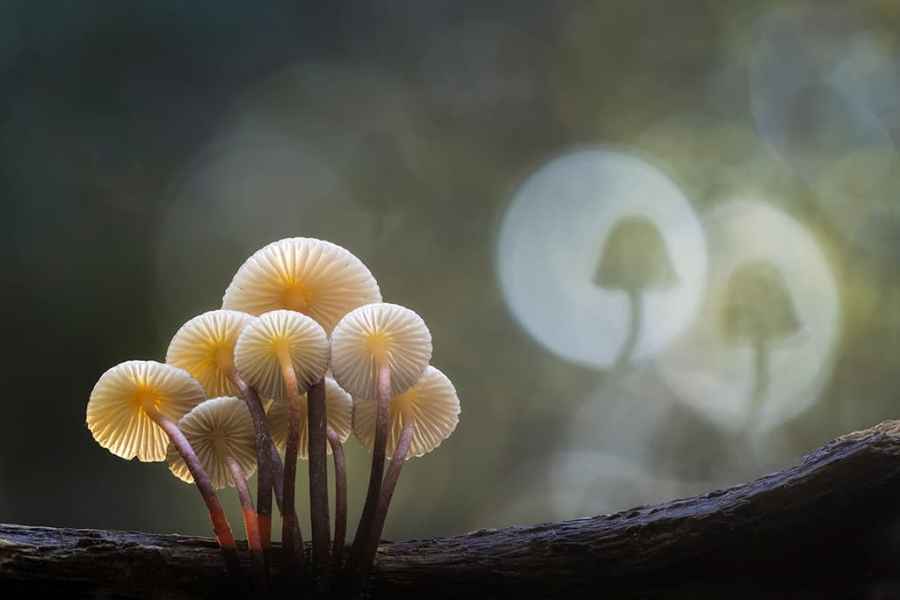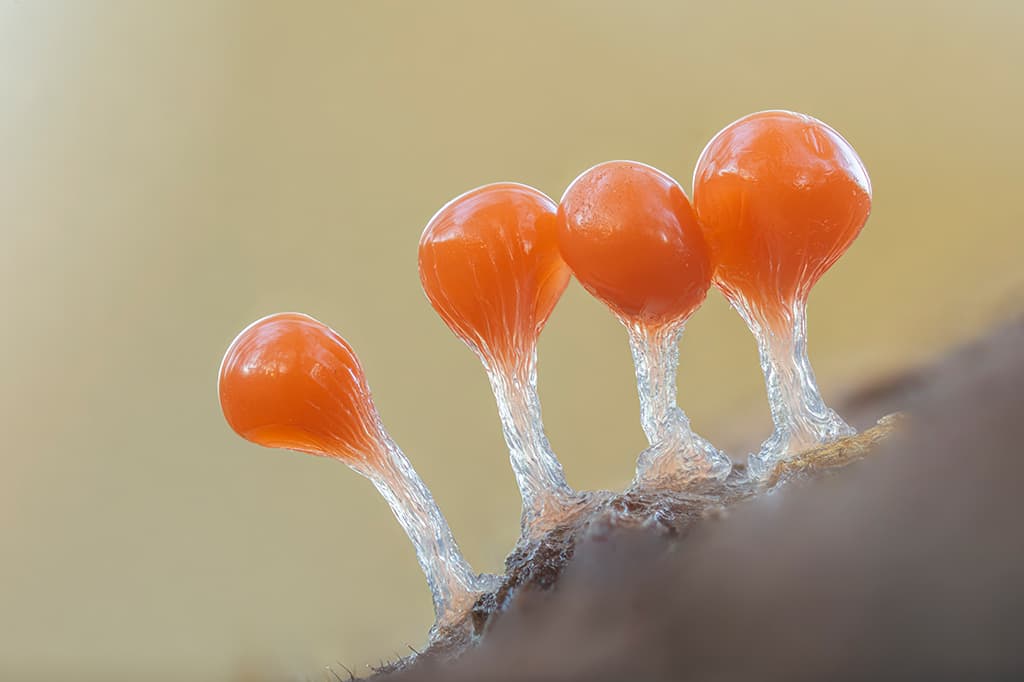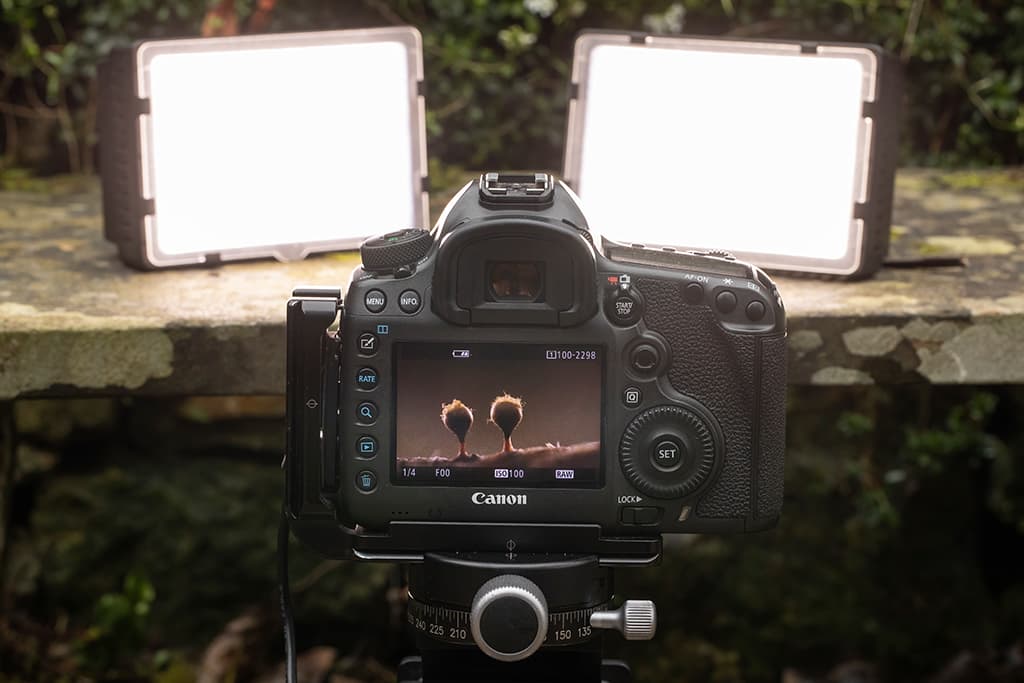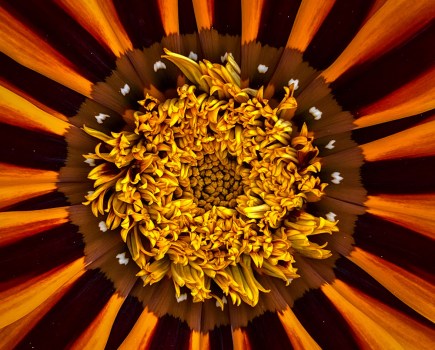Dig out your macro lens and head down to the woods, as the next few weeks should see spectacular fungi displays appearing up and down the country. Guy Edwardes shows you how to capture them

Your guide: Guy Edwardes
Based in Dorset, Guy has been a professional nature and landscape photographer for over 25 years. His work has been widely published and he runs a series of popular photographic workshops around the world, including fungi workshops in the UK during the autumn months! To see more of his work and for information about his workshops. visit www.guyedwardes.com.
I have spent the past 25 years refining my technique for capturing creative and engaging images of this fascinating autumnal subject. Here I’ll share my tips for finding, lighting, and composing great fungi images, often with minimal equipment. I will also explain my method of focus stacking to achieve sharpness throughout the subject, whilst maintaining beautiful background bokeh effects.
This is a subject that is accessible to everyone. In the UK we have some truly dazzling species, although even the most common fungi can look great when certain creative techniques are applied.

Group of Mycena inclinata, New Forest National Park, Hampshire, England Canon EOS 90D, 100mm, 1/40sec at f/2.8, ISO 100
Finding and identifying fungi
With fungi photography I find that the skill is as much in finding the best specimens in the best positions as it is the technical knowledge of how to compose and light the subject and get it all sharp and well-exposed. Expect to spend a lot of time crawling around on the ground getting extremely muddy! All-over waterproof clothing is the order of the day with fungi photography.
It takes time to search for fresh, perfect, undamaged specimens. I usually reject any that have been damaged by slugs, snails, mice or moulds. Also, any fungi that are too dirty to be carefully brushed clean without bruising them.
You need to look very closely to find fungi, as many are small and hard to spot amongst the leaf litter or on the underside of fallen trunks. Search in shady places, such as inside rotted out logs and underneath fallen timber.
It’s also worth using a magnifying glass to scan for smaller fungi and slime moulds. A head torch can be really useful for checking in darker spots on the underside of fallen tree trunks. Don’t expect to wander around a wood for an hour or so and come across great shots.
You might be lucky, but it’s more likely to take hours to find some fine specimens. Fungi can be found virtually everywhere. However, old deciduous woodlands with lots of fallen decaying timber tend to be the most productive habitat with the greatest variety of species.

Upright coral (Ramaria stricta) in autumn, Uplyme, Devon, England
Canon EOS 90D, 100-400mm, 1/200sec at f/5, ISO 100
Areas of unimproved grassland can also be good, as you’re likely to find colourful and photogenic waxcaps, whose caps split and curl, revealing their gills. From mid-September to mid-November is the period when you’re likely to find the greatest number and variety of fungi.
Ideally the weather conditions should be mild and wet. There’s often a fresh flush of fruiting fungi immediately after a rainy period. They can emerge very quickly, so it’s important to be out searching the moment it stops raining if you want to catch them in perfect condition! Many fungi species look very similar but thankfully there are some excellent resources to help identify them.
Roger Phillips’ book, Mushrooms, is very good and even apps such as Seek and Shroomify can provide a useful starting point for identification (although they shouldn’t be relied upon!). If I’m still stuck, I will turn to online resources such as First Nature or request help from one of the excellent Facebook groups like British & Irish Fungi.
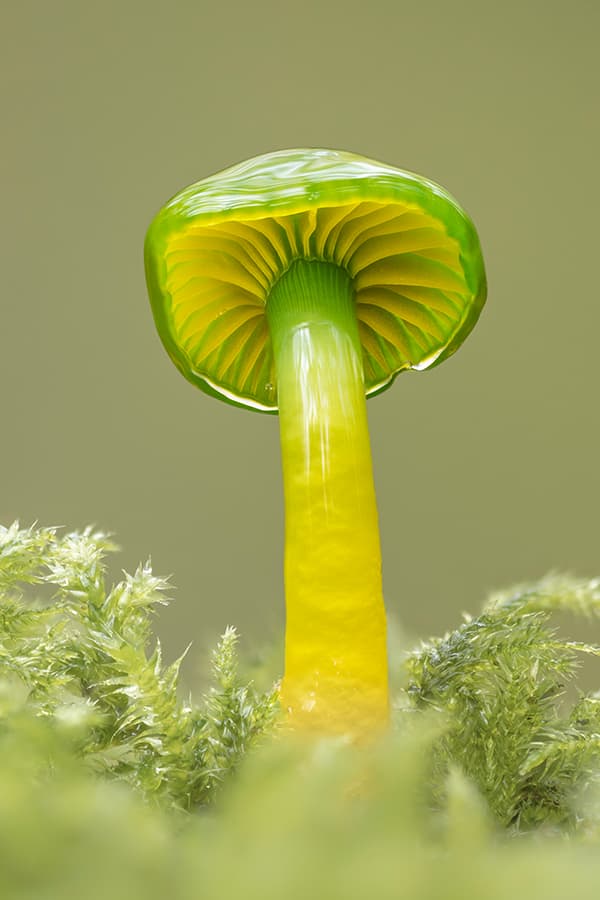
Parrot waxcap (Gliophorus psittacinus), Duncliffe Wood, Dorset, England
Canon EOS 90D, 180mm, 1/20sec at f/3.5, ISO 100
Lighting
Creative lighting can really transform fungi photographs. Think about the parts of the fungus you might want to emphasise, or how you might use lighting to help separate it from its surroundings.
Backlighting can be particularly effective. Many woodland fungi appear in dark shady places, so it can be nice to maintain this feel in your photographs. Natural light is often best, but you may then need to control the contrast in a scene using reflectors, diffusers, or artificial light.
Composition
I often utilise the shallow depth of field and narrow field of view afforded by a telephoto lens to help separate the subject from the surrounding clutter of vegetation, fallen leaves and sticks and to achieve a more uniform background tone. I normally work with a wide aperture and in combination with focus stacking for sharpness throughout the entire fungus.
As with all close-up subjects, it’s important to get the back of your camera parallel to the plane of the subject to enable you to get as much of it as sharp as possible. This is especially important when using a wide aperture for shallow depth of field, but is worth always bearing in mind whether you’re photographing a group of fungi, a pair, or a close-up detail. As a general rule if a fungi has gills I like to be able to see those gills in my image, so I’m often down low and shooting slightly up at them.

Amethyst Deceiver (Laccaria amethystea), New Forest National Park, Hampshire, England Canon EOS 90D, 180mm, 1/13sec at f/3.5, ISO 100
As with many other nature subjects, the background of an image is often just as important as the subject itself when it comes to composition. Keep checking the background for any potentially distracting elements such as out-of-focus twigs or grasses and for annoying bright highlights.
This is not always easy when you’re shooting with a wide aperture for shallow depth of field, because distractions may not be that obvious on first inspection. Once you have your composition set, it’s always worth manually turning the focusing ring throughout its entire range of travel (whilst looking through the viewfinder or in live view) to check for any distractions that may have gone unnoticed, enabling you to remove them or recompose before taking the shot.
Background bokeh
Interesting bokeh created from out-of-focus background highlights can add a lot of atmosphere and interest to fungi images. It can be achieved by shooting up towards the woodland canopy with light coming through between the leaves and branches of distant trees, or simply light reflecting off shiny or wet leaves in the background.
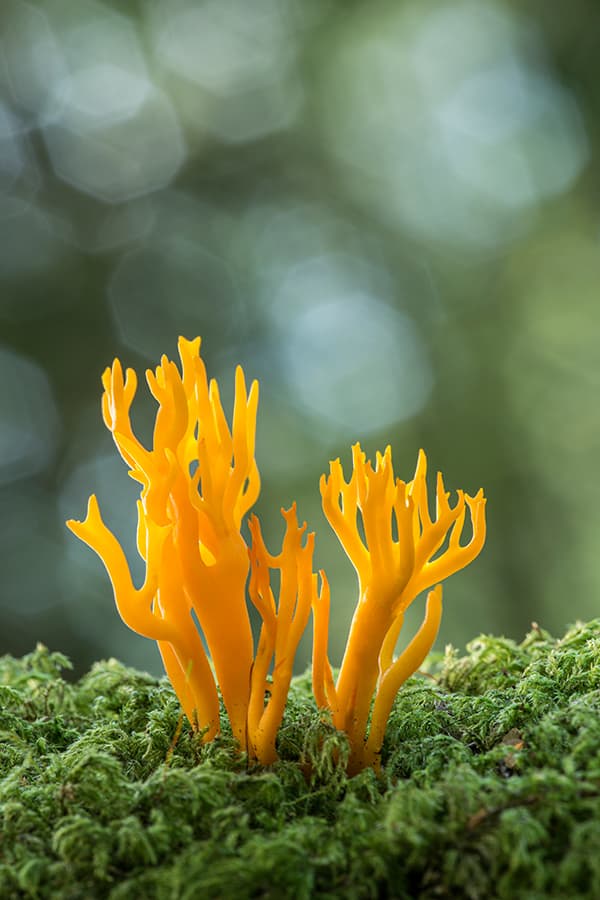
Yellow stagshorn fungus (Calocera viscosa), New Forest National Park, Hampshire, England
Canon EOS 5D Mark III, 180mm, 4sec at f/16, ISO 100
The smaller the aperture you use, the smaller and more hexagonal the bokeh shapes will become, so stick to a wide aperture for a more natural effect. When shooting towards a bright background the fungi itself is likely to appear quite dark or as a silhouette, which can be quite effective, especially during the ‘blue hour’ around dawn and dusk.
However, if you want to see detail in the fungi you may need to use reflectors or a small amount of artificial illumination to achieve a balanced lighting effect.
Why it works
These porcelain fungus were in nice condition, but I came across them late in the day. I used my 100mm macro lens to shoot them from beneath against the distant treetops, so their gills were clearly visible. I exposed to keep the sky dark and then used my two LED light panels to backlight them from above.
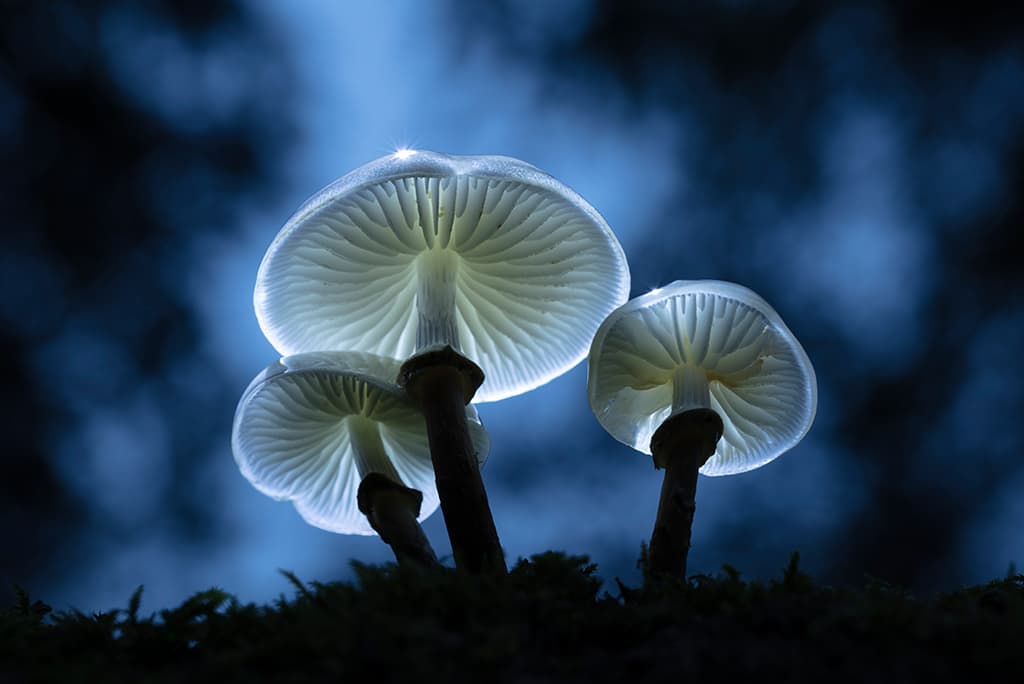
Porcelain Fungus (Oudemansiella mucida), New Forest National Park, Hampshire, England. Canon EOS 5DS R, 100mm, 1/6sec at f/11, ISO 100
I processed the image using a cool white balance setting of 3500K, in the hope this would enhance the blue hour effect and give the appearance of moonlight illuminating the fungi through the forest canopy. As the foliage in the background was moving in the wind, I decided not to focus stack on this occasion, instead stopping down to f/11 for a little more depth of field.
Guys Top Tips for shooting fungi
Locating fungi
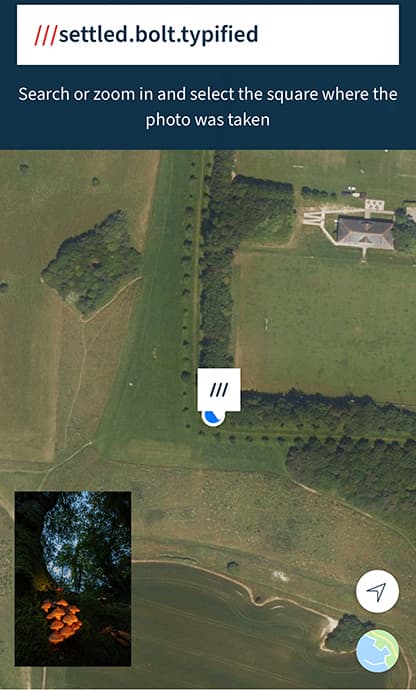
Some fungi emerge in the same place each year, so it’s well worth keeping a note of the exact location each one is found so that you can return to the same spot. I take a record shot on my iPhone using the What 3 Words app, which saves the photo of the fungi and it’s surroundings, along with the precise location, making it very easy to find the position of that fungi again in the future.
Slime moulds

Arcyria denudata slime mould sporangia on decaying beech, New Forest National Park, Hampshire, England. Canon EOS 5DS R, 0.6 sec, ISO 320
Keep an eye out for slime moulds, which are not fungi but a separate kingdom called Protista. They come in a variety of weird shapes varying in size between 1/2mm and 7mm tall! Due to their size they can require more specialised equipment to photograph.
Keep logs in your garden
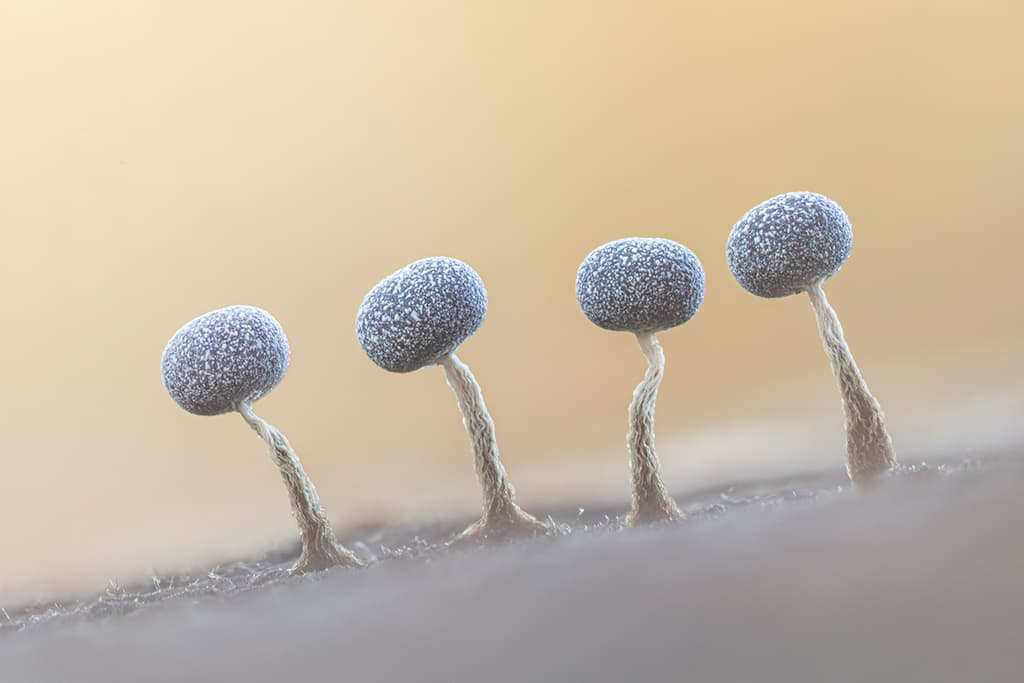
Physarum spp. Slime Mould sporangia, New Forest National Park, Hampshire, England. Canon EOS 5DS R, 0.8 sec, ISO 400
If you have space in your garden, it’s worth keeping a few old logs in a damp shady place where you can easily keep a close eye on them. Check the logs after rain and occasionally you may find fungi and slime moulds fruiting on them!
Magnification

A dioptre such as the Raynox DCR-250 can be used to increase the magnification of many lenses at minimal cost. Extension tubes will allow some lenses to focus closer with little loss of image quality.
Wideangle lenses

Sulphur tuft (Hypholoma fasciculare) in broadleaved woodland, Golitha Falls NNR, Cornwall, England. Canon EOS 5DS R, 27mm, 1.6 sec at f/16, ISO 100
Sometimes it’s nice to use a wideangle lens to show a fungus within its surrounding habitat. I use a Laowa 15mm macro lens that can achieve 1:1 magnification, whilst its extremely wide field of view also includes lots of the background environment.
Avoid halos
Before stacking your focus-bracketed set of images, always delete any frames at the beginning and end of the sequence that have no sharp detail on the subject. Failure to do this can lead to a poor end result with excessive halos around the subject.
Kit list
Articulating rear LCD screen
A camera body with a fully articulating rear LCD screen will help you compose the image when working close to the ground or at an awkward angle. An in-camera focus-bracketing function is also highly recommended.
Tripod
When working in low light, a small but sturdy tripod is essential. It should be able to go flat to the ground or have a reversible centre-column. I prefer a sturdy ball head for maximum flexibility.
Macro lens
I use a 180mm macro lens as it provides a greater working distance from the subject, which aids the positioning of lights and reflectors. I also use my 100-400mm lens for larger fungi.
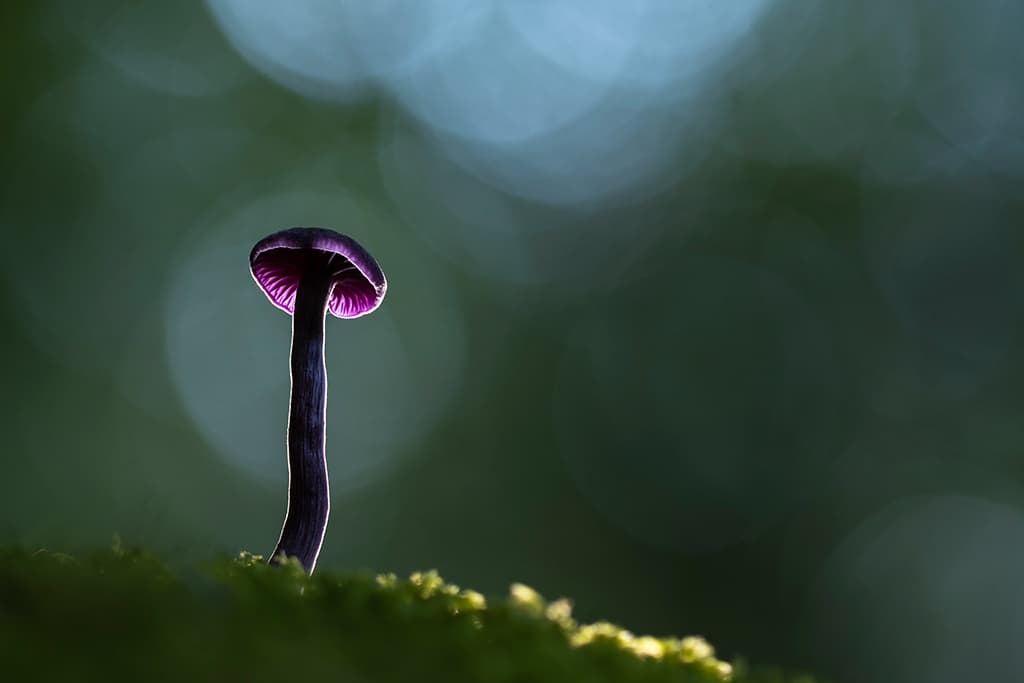
Amethyst Deceiver (Laccaria amethystea), New Forest National Park, Hampshire, England. Canon EOS 90D, 100mm, 1/20sec at f/2.8, ISO 100
LED light panel
I prefer a constant light source rather than flash. LED light panels will fill shadows and create interesting but natural-looking lighting effects. I use a pair of Neewer CN-160 units. I also carry a diffuser, reflectors and a small Maglite incandescent torch.
Polarising filter
A polarising filter can be very useful for removing reflections from the shiny caps of some fungi. I also carry a black umbrella to use as a shade.
Focusing rail
For tiny fungi and slime moulds, more specialised equipment will allow you to achieve better image quality through focus stacking. I use a Laowa 25mm 5X macro lens on a StackShot automated focusing rail.
Fine paintbrush
Handy to brush fine dirt and dust off my subject, along with some needle nose tweezers for removing distracting bits of dirt and debris.
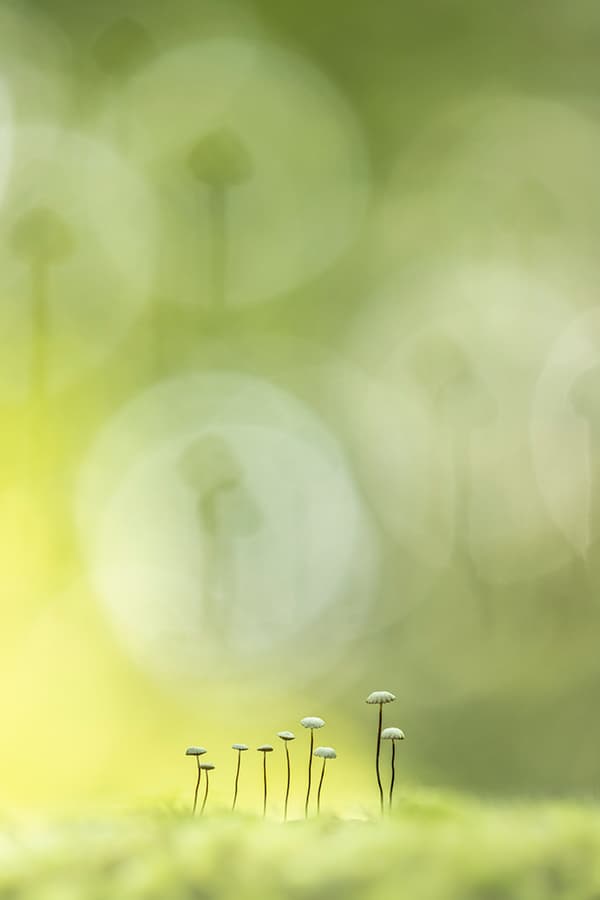
Collared parachute fungus or Pinwheel mushroom (Marasmius rotula), New Forest National Park, Hampshire, England. Canon EOS 90D, 180mm, 1/25sec at f/3.5, ISO 100
Focus Stacking
The principle of focus-stacking is to take a series of images each focused in a different place through the depth of the subject – this is focus bracketing. The resulting images each include an overlapping ‘slice’ of sharp detail. Software can then be used to ‘stack’ these slices of sharp detail into a single image of exceptional clarity – this is focus stacking.
Images taken at high magnification show diffraction very quickly as the lens aperture is stopped down, so sharper images can be achieved by focus stacking at a wider aperture. I typically use an aperture of f/4-5.6. The effect is that you’re no longer relying upon a single band of acceptable sharpness either side of the actual point of focus.
Instead, you have many individual points of focus (with overlapping bands of depth of field) through the depth of the subject, resulting in critical sharpness throughout. As you’re shooting at a wide aperture any background elements remain nicely diffused.
It’s important to shoot your bracketed sequence in still conditions and in constant light, as any change in the lighting (either on the subject or the background) could cause problems with the stacking process. I tend to use either the in-camera focus-bracketing function, or an automated focusing rail for really tiny subjects.
Using Canon in-camera focus bracketing with a standard macro lens
1. Set camera as close as necessary and as parallel as possible to the fungi. Autofocus should be turned on (back button focus) and the camera set to 2-second delay.
2. Set step distance in focus-bracketing menu according to the lens and aperture being used (typically between 1 and 4). I set a large number of images (100), as I stop the bracket manually.
3. Use live view to aid setting the point of focus just in front of the nearest part of the fungi by manually turning the focusing ring.
4. Create a new folder on the memory card for focus-bracketed sets (via a folder icon in live view touch control).
5. Press shutter button to start focus-bracketing, whilst watching the point of focus gradually move through the fungi on the rear LCD. When the point of focus has passed all the way through, press the shutter button to stop focus-bracketing.
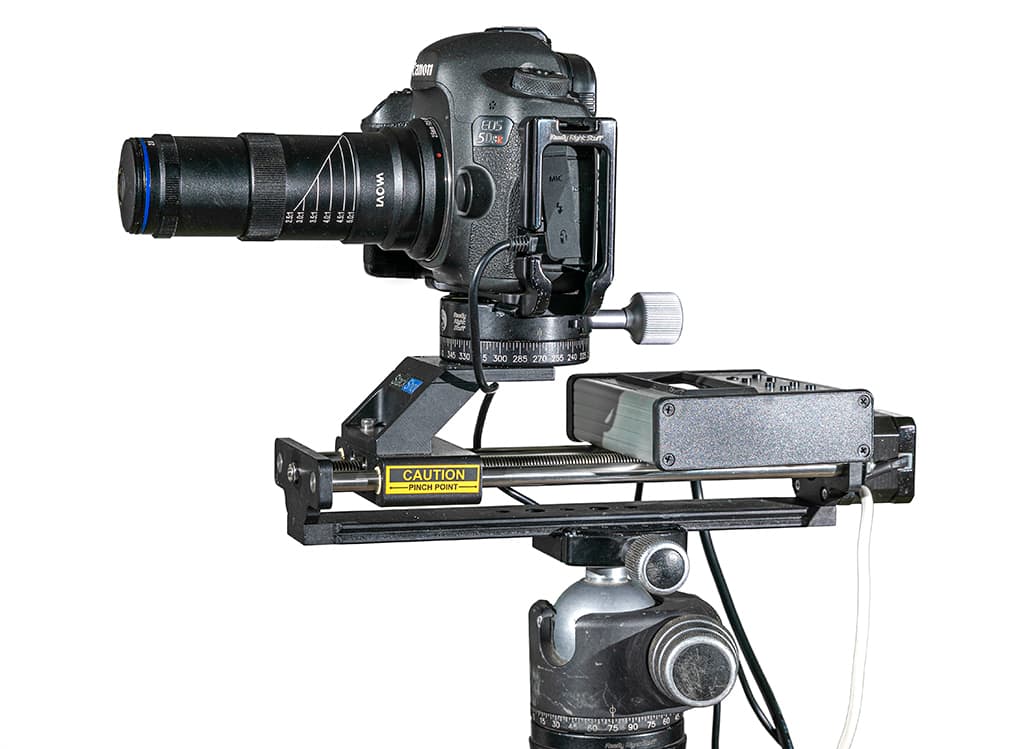
My set-up for extreme macro (slime moulds and tiny fungi). Canon 5DS R, Laowa 25mm 5X macro, StackShot automated focusing rail
Using an automated focusing rail with Laowa 5X macro lens
1. Set camera and rail as close as necessary and as parallel as possible to the fungi. Temporarily increase exposure time or ISO to provide a clear view of the subject in live view.
2. On focusing rail controller set step distance calculated for sensor size, magnification and aperture.
3. Use controller to move camera back and forth on the rail until lens is focused just in front of the nearest part of the fungi. Set as start point via controller.
4. Move camera forwards on the rail until lens is focused just beyond the furthest part of the fungi. Set as end point via controller.
5. Reset exposure time or ISO on camera to pre-determined settings for correct exposure and start bracketed sequence via controller. Which automatically calculates the necessary number of images.
In both cases the resulting focus-bracketed set of images is then stacked using Helicon Focus Pro software. Which I find produces a slightly better result compared to stacking in Photoshop.
It is also much faster and allows me to work with DNG Raw files. I’m typically shooting between 20 and 120 images per stack when using my automated focusing rail. Depending upon the size of the subject or the depth of the group.
Further reading

